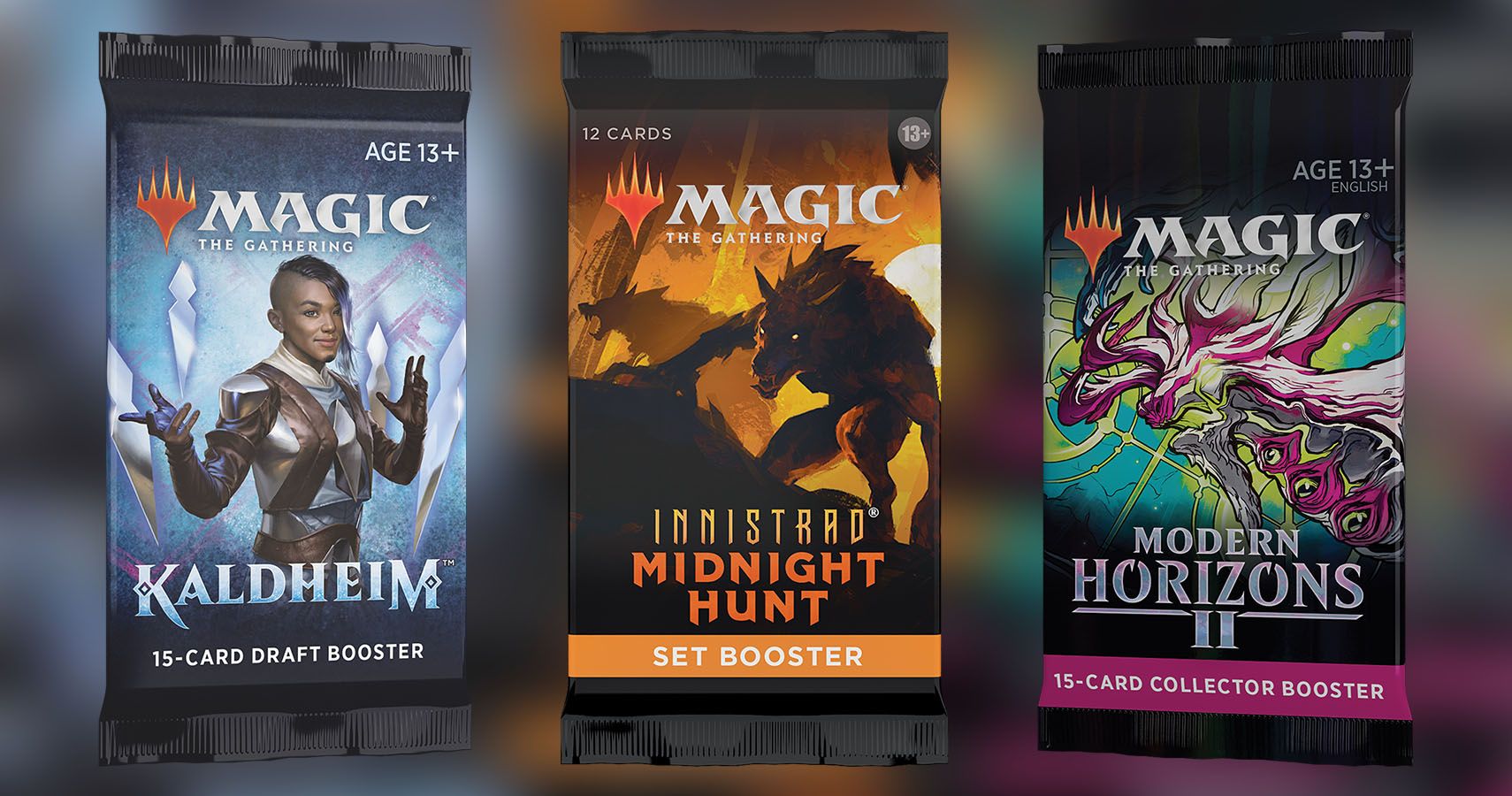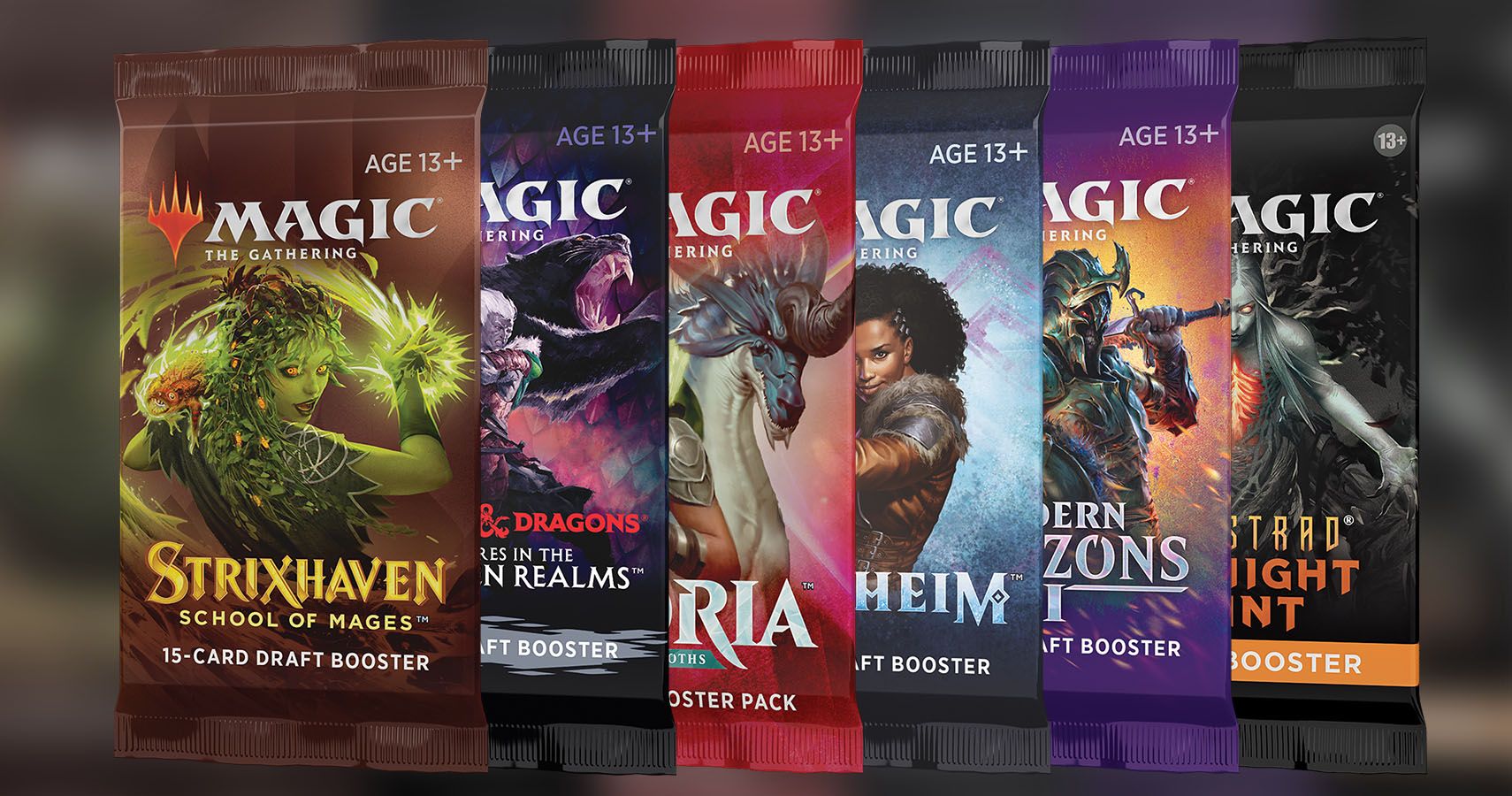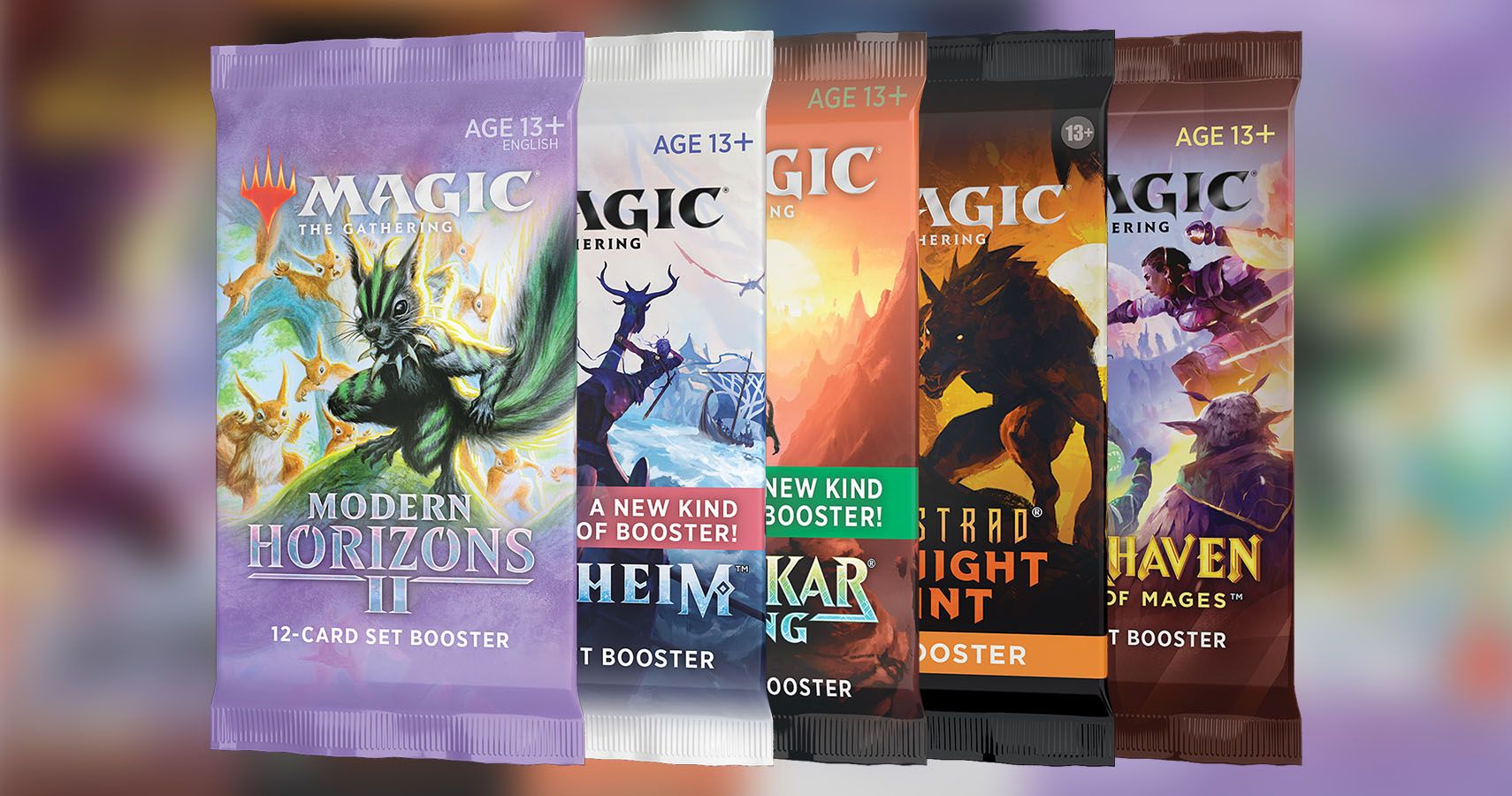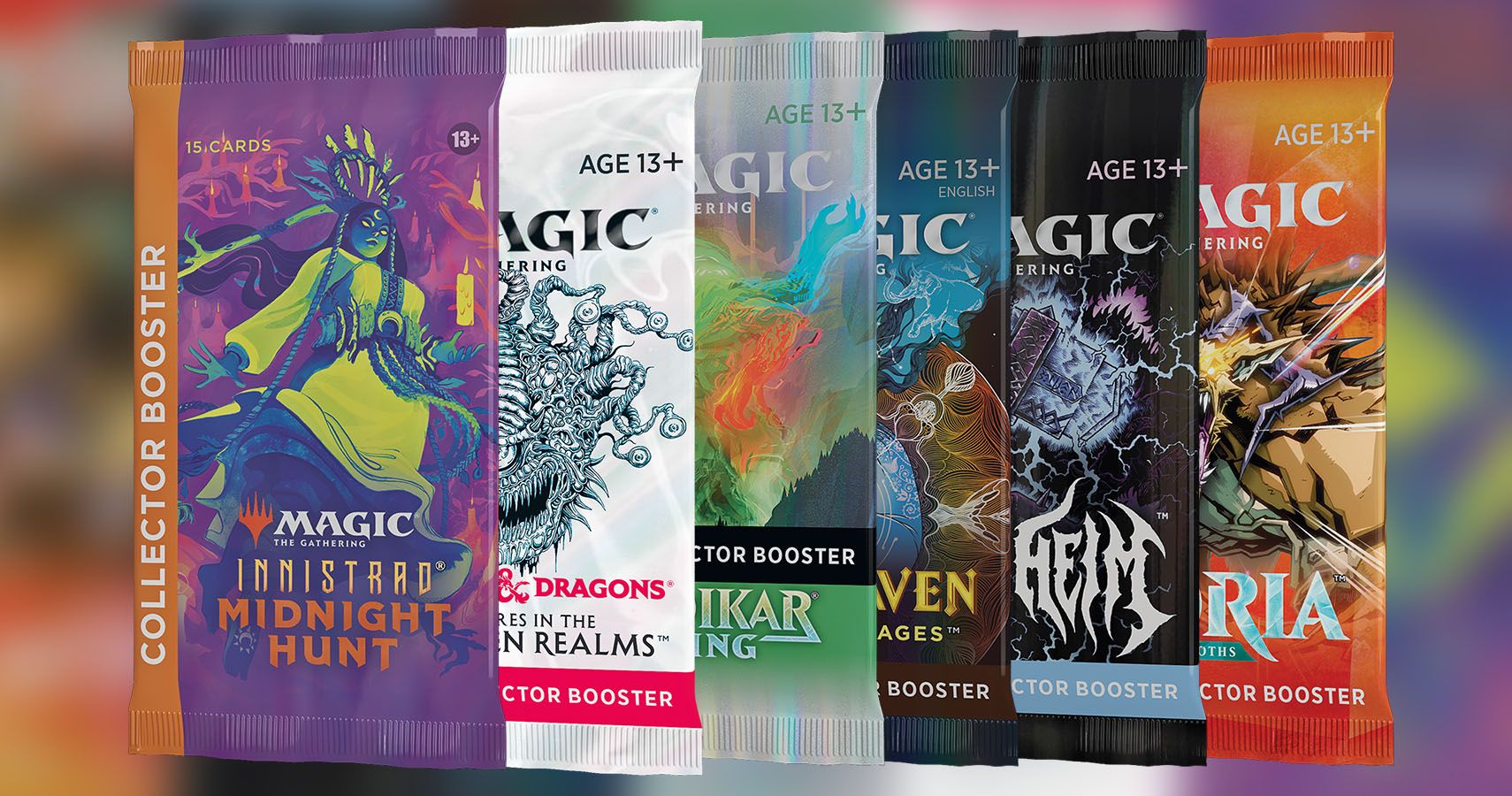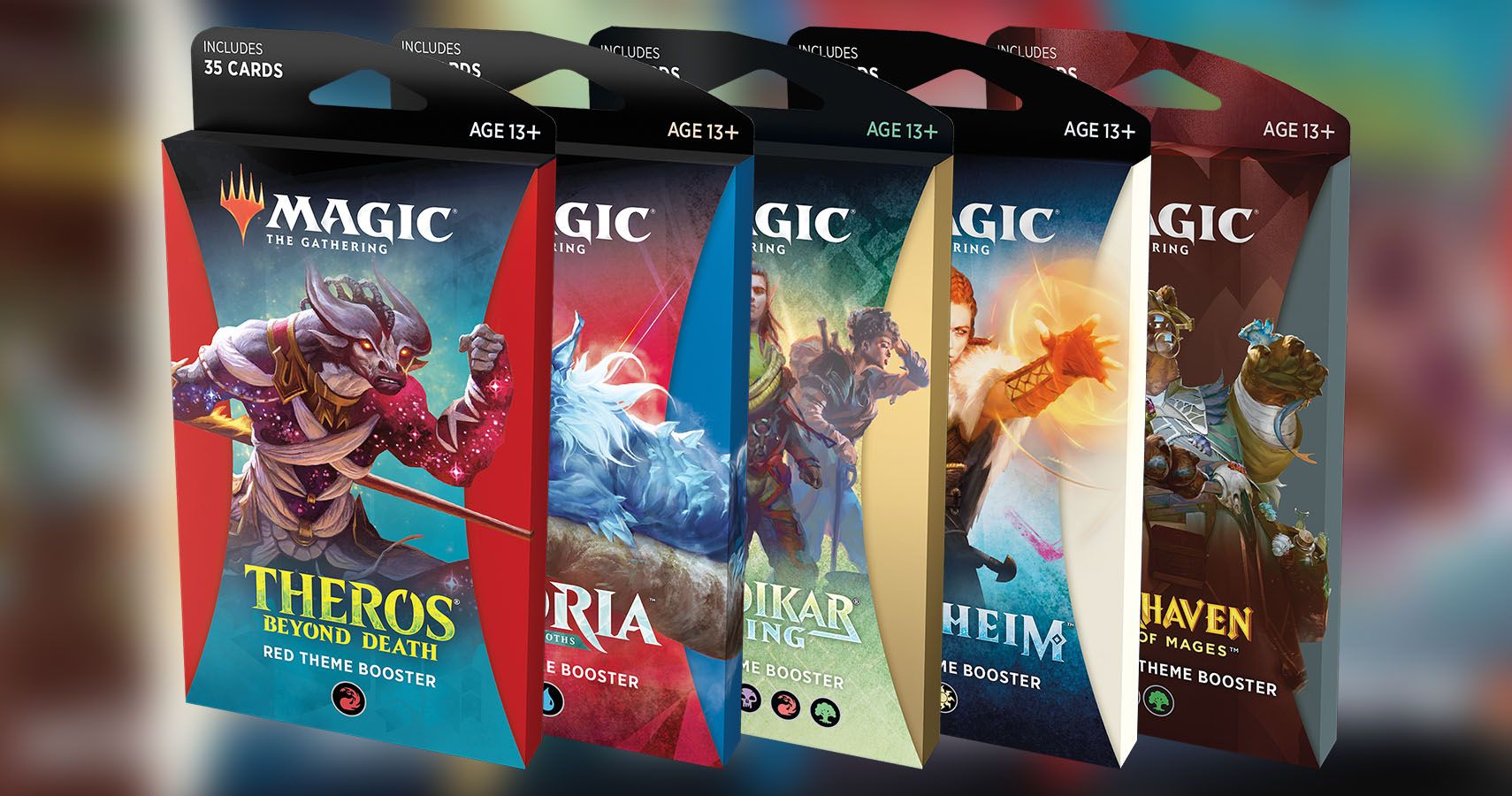No matter how you like to play Magic: the Gathering, it's almost guaranteed you'll have encountered a booster pack. They're the small bags of cardboard that open your decks up to new possibilities, and are even the entire focus of some of the game's most popular formats.
In the last couple of years, Magic's expanded the range of booster packs. Joining the humble draft booster are the set booster, collector's booster, and theme booster. What are the differences, and which ones should you get?
Draft Boosters
Draft boosters are the most basic offering for Magic. They're the cheapest, most widely available (usually) kind, and they tend to feature the lowest number of rare cards in them. Every single set has, at the very least, a draft booster pack.
Barring special sets like Commander Legends or Jumpstart, which had 20, the average draft booster pack will contain 16 cards. 15 of these will be game pieces – the cards you actually want – while the 16th will be a "marketing card" that usually includes an ad for other Magic products, but may also be a token you can use in the game.
Each draft booster has a set-in-stone ratio of rarities for its cards:
- Ten Common
- Three Uncommon
- One Rare or Mythic Rare
The last slot is usually a basic land, but that can often change. For example, in Strixhaven: School of Mages, the basic land slot was instead replaced by the Mystical Archive card, which could be uncommon, rare, or mythic.
While draft boosters have always been the primary kind of pack people buy, they do serve a specific purpose. As the name suggests, draft boosters are designed for limited formats, such as draft and sealed play. Each of these formats requires players to make decks specifically from only the cards found in a draft booster pack, and are popular at set pre-release events.
Set Boosters
Set boosters are the newest addition to the line-up, introduced with 2020's Zendikar Rising. Despite being so new, Wizards of the Coast is positioning them as 'the future' of cracking packs. For those who just like to rip open a booster and have no desire to play limited formats, these are the ones to pick.
Set boosters include fewer cards than draft or collector's boosters, only having 14 instead of the usual 16. It's also more difficult to pin down a set booster's rarity ratio, with each slot in the pack having its own chance of being a different rarity.
Because these are a new product, Wizards has tweaked the rarity distribution between sets. As of Innistrad: Midnight Hunt, the current set booster breakdown is:
- The first card can either be the usual marketing card, like in draft boosters, or it can be a card from "The List". The List is a collection of cards from Magic's history, printed in their original framing, and what those cards can be changes from set to set.
- The second card is always a land.
- The third, fourth, and fifth cards are single-faced, common rarity.
- The sixth and seventh are single-faced uncommons.
- Cards eight and nine can be single- or double-faced commons or uncommons in either the standard frame or the set's alt-art "showcase" frame. In sets where there are more than one showcase, like Midnight Hunt, these will only be from one style, such as the Equinox frame.
- The tenth and 11th cards can be single- or double-faced cards from any rarity, in any of the set's showcase frames, or in a borderless style that sees the card stretch out to the edge of the card. In Midnight Hunt, new, exclusive, made-for-Commander cards were also introduced to Set and Collector's boosters.
- The 12th card is always a foil in the normal card style, but from any rarity.
- Card 13 will be a rare or a mythic rare.
- The last card is an art card, which is not a game piece but includes blown-up versions of card art. Five percent of art cards can also be a rarer version with the artist's golden signature embossed onto it.
Set boosters are intended to be the mid-point between a draft booster's lower price and a collector's booster's more exciting cards. Though they have fewer cards than a draft booster, they're great for constructed players who want to find a bit of bling for their decks without pulling lots of 'chaff' that is only viable in limited play.
Collector's Boosters
The big one, collector's boosters are the most expensive of the four main booster pack types. Though they cost significantly more, these are also the most exciting ones to open, and are more likely to have the most valuable pulls in the whole set in them.
Like draft boosters, collector's boosters have 16 cards in them. Unlike draft boosters, collector's have a significantly higher number of rare and mythic rare cards, with a guaranteed five in each pack. Every card will also have a non-standard treatment, meaning all of them will have either showcase, extended, or borderless art in foil or non-foil.
Like set boosters, the exact distribution in collector's boosters changes from set to set. With Innistrad: Midnight Hunt, you can expect to find:
- Collector's Boosters are the only ones to not have a marketing card. Instead, the first card is a foil double-sided token.
- The second card will be a foil land.
- The next four cards will all be foil commons (double- or single-sided).
- Cards seven and eight will be foil uncommons (double- or single-sided).
- The ninth card is a guaranteed foil rare or mythic rare.
- Card Ten and the 11th are extended-art cards. In Innistrad: Midnight Hunt, one of these will be from the main set, while the other will be a made-for-Commander card that either comes from the set booster or the Commander pre-constructed decks' exclusive cards.
- The 12th and 13th cards are showcase common or uncommons.
- Card 14 will always be either a foil showcase (for Midnight Hunt, the Equinox style) or borderless common or uncommon.
- The 15th card is a rare or mythic rare showcase or borderless.
- The last card is a foil rare or mythic rare showcase, borderless or extended-art card.
People buy Collector's boosters purely for the thrill of cracking the pack. This is Magic's luxury product; the one that you only open once in a blue moon if you're flush with cash, win it as a prize at your game store, or get as part of the annual Gift Bundle.
Theme Boosters
The final type is theme boosters. Theme boosters are larger packs of 35 cards all set around a specific color identity, and are priced slightly above that of a Set booster.
While most come with the five basic colors (white, blue, black, red, and green), there have been some different takes, such as Strixhaven's being based on its five two-color colleges. There is often one pack that features all five colors, but shares a mechanical theme. For Kaldheim it was Vikings, for Adventures in the Forgotten Realms it was the Dungeons, and for Midnight Hunt it is werewolves. It isn't known whether this sixth WUBRG pack is going to be a consistent thing for sets from now on, but it certainly looks like it will be.
Although they contain the most amount of cards, the vast majority of them will be common or uncommon, as there are only one or two rare or mythic rares in each pack.
Theme boosters are intended for constructed formats, where buying a theme booster for your deck's colors gives you a nice, hefty chunk of cards ready to slot in. Anecdotally, theme boosters are also a great tool for newcomers who are still feeling out their preferred colors. Buy a friend who's showing a preference for black and green their own Witherbloom theme booster, and they have a decent pool of cards ready to go.

